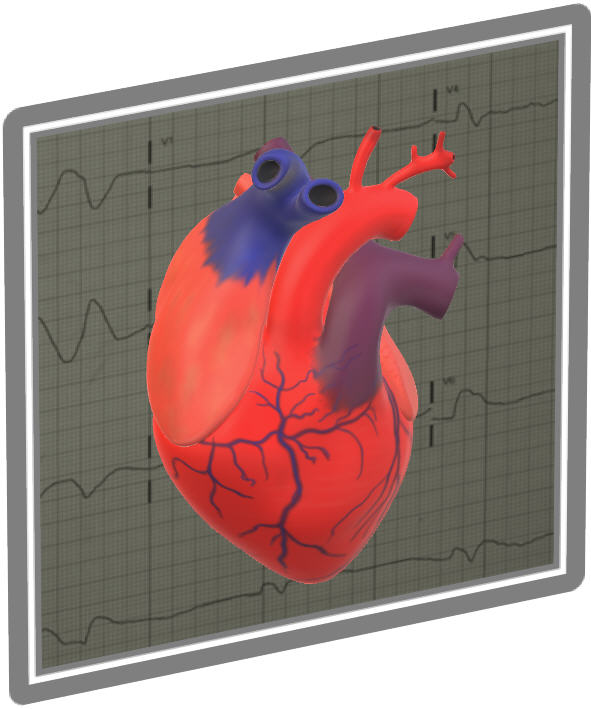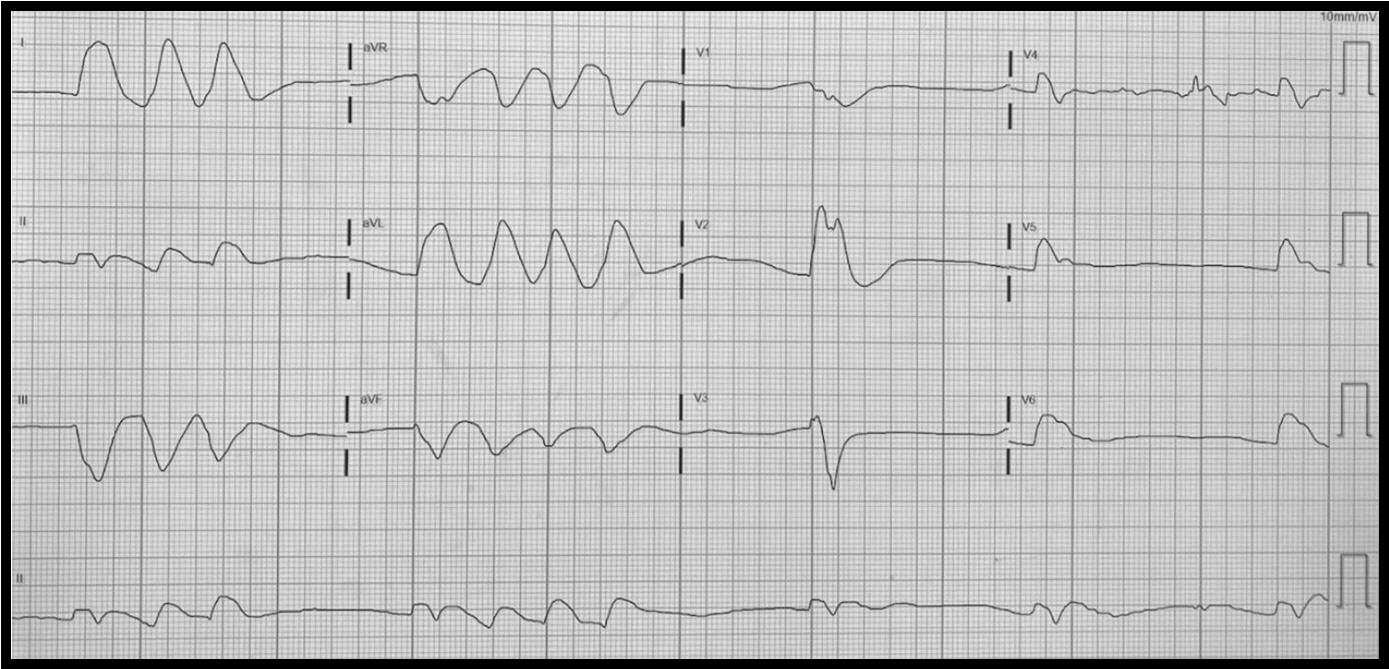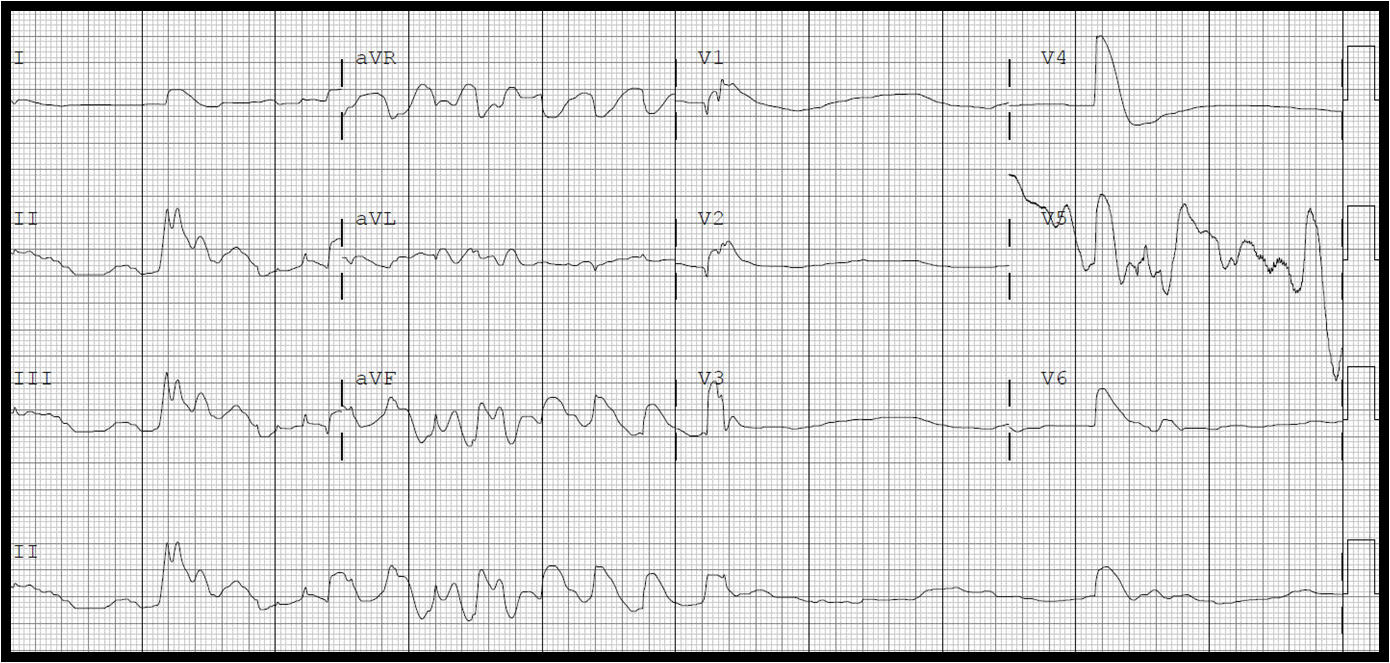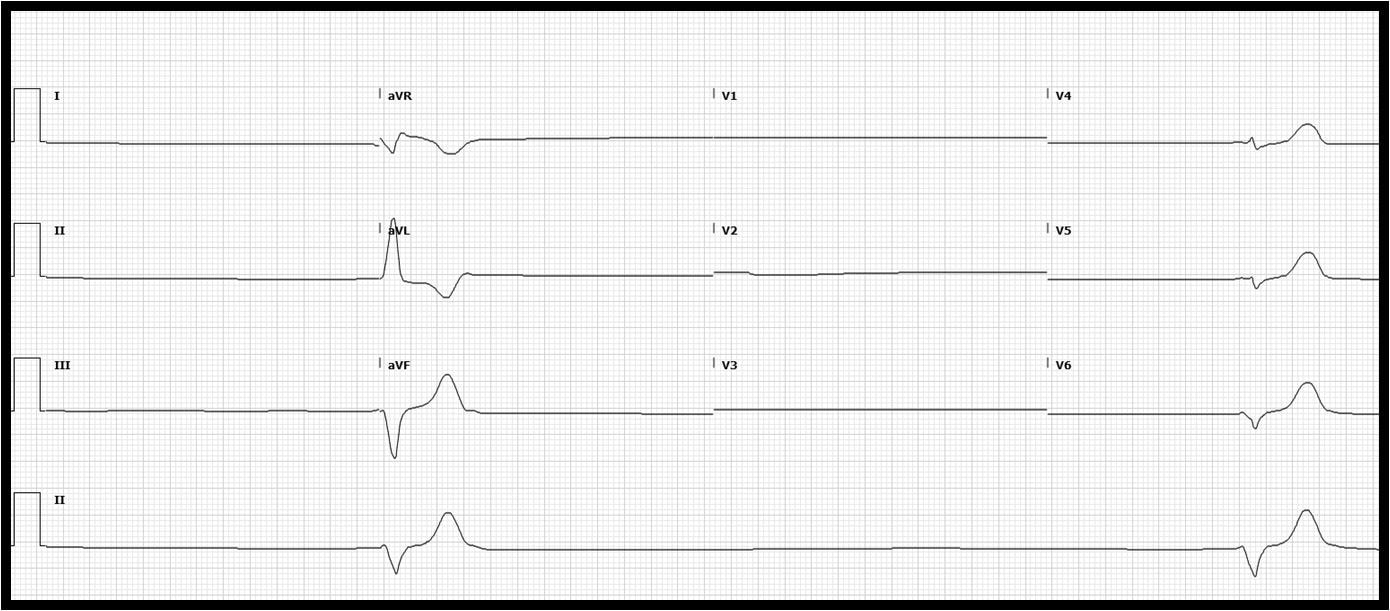November 2020 Issue
ISSN 2689-291X
ISSN 2689-291X
Agonal Rhythm.. Pre Asystole Erratic
Idioventricular Rhythm!
Introduction
An agonal rhythm is a very slow ventricular rhythm often recognized as the terminal rhythm of a dying patient which precedes asystole. It has been described as a variant of idioventricular rhythm, but slower, occasionally < 20 beats per minute and with bizarre wide complexes, and often absent atrial activity [1]. There is usually no pulse associated with an agonal rhythm which is a reflection of significant myocardial damage and metabolic derangements. It has also been described as a variant of asystole, since it invariably leads to asystole and death, and is treated similarly in out-of hospital cardiac arrest victims. Whether early pacing in such patients impacts survival is unclear and depends on the time of arrest [2]; however, overall it portends a very poor prognosis [3]. We present here EKGs of 3 patients in varying stages of agonal rhythm.
An agonal rhythm is a very slow ventricular rhythm often recognized as the terminal rhythm of a dying patient which precedes asystole. It has been described as a variant of idioventricular rhythm, but slower, occasionally < 20 beats per minute and with bizarre wide complexes, and often absent atrial activity [1]. There is usually no pulse associated with an agonal rhythm which is a reflection of significant myocardial damage and metabolic derangements. It has also been described as a variant of asystole, since it invariably leads to asystole and death, and is treated similarly in out-of hospital cardiac arrest victims. Whether early pacing in such patients impacts survival is unclear and depends on the time of arrest [2]; however, overall it portends a very poor prognosis [3]. We present here EKGs of 3 patients in varying stages of agonal rhythm.
Figure 1. Irregular nonsustained wide complex tachycardia followed by erratic slow ventricular activity
The above ECG (Figure 1) reveals runs of wide complex tachycardia with very wide complexes of variable morphology followed by abrupt and progressive slowing of the ventricular rate without discernible atrial activity, consistent with agonal rhythm.
The above ECG (Figure 1) reveals runs of wide complex tachycardia with very wide complexes of variable morphology followed by abrupt and progressive slowing of the ventricular rate without discernible atrial activity, consistent with agonal rhythm.
Figure 2. Bizarre ventricular activity with artifact followed by very slow ventricular rhythm.
The above ECG (Figure 2) reveals bizarre wide complex ventricular activity with intervening artifact, followed by asystole with occasional very wide complex ventricular beats. There are no conspicuous P waves. This is consistent with agonal rhythm.
The above ECG (Figure 2) reveals bizarre wide complex ventricular activity with intervening artifact, followed by asystole with occasional very wide complex ventricular beats. There are no conspicuous P waves. This is consistent with agonal rhythm.
Figure 3. Asystole with rare intervening wide complexes.
The above ECG (Figure 3) reveals two QRS complexes interrupting asystole. The absence of atrial activity and the absence of palpable pulse during such ventricular electrical activity are indicative of advanced agonal rhythm immediately preceding complete asystole.
References:
Authors:
Landai Nguyen, D.O.
Staff Cardiologist
The Heart Center of Northeast Georgia Medical Center,
Cumming, GA
Muhammad Rafique, M.D.
Cardiology Fellow
University of South Alabama
Mobile, AL
Nilarun Chowdhuri, M.D.
Cardiology Fellow
University of South Alabama
Mobile, AL
Siva Chiranjeevi, M.D.
Cardiology Fellow
University of South Alabama
Mobile, AL
Christopher Malozzi, D.O.
Assistant Professor of Cardiology
University of South Alabama
Mobile, AL
Amod Amritphale, M.D.
Assistant Professor of Cardiology
University of South Alabama
Mobile, AL
G. Mustafa Awan, M.D.
Associate Professor of Cardiology
University of South Alabama
Mobile, AL
Bassam Omar, M.D., Ph.D.
Professor of Cardiology
University of South Alabama
Mobile, AL
The above ECG (Figure 3) reveals two QRS complexes interrupting asystole. The absence of atrial activity and the absence of palpable pulse during such ventricular electrical activity are indicative of advanced agonal rhythm immediately preceding complete asystole.
References:
- Johnson CD. Electrocardiogram of the month. Agonal rhythm. Bol Asoc Med P R. 1983 Jul;75(7):324-5.
- Olson CM, Jastremski MS, Smith RW, Tyndall GJ, Montgomery GF, Daye MC. External cardiac pacing for out-of-hospital bradyasystolic arrest. Am J Emerg Med. 1985 Mar;3(2):129-31.
- Väyrynen T, Kuisma M, Määttä T, Boyd J. Medical futility in asystolic out-of-hospital cardiac arrest. Acta Anaesthesiol Scand. 2008 Jan;52(1):81-7.
Authors:
Landai Nguyen, D.O.
Staff Cardiologist
The Heart Center of Northeast Georgia Medical Center,
Cumming, GA
Muhammad Rafique, M.D.
Cardiology Fellow
University of South Alabama
Mobile, AL
Nilarun Chowdhuri, M.D.
Cardiology Fellow
University of South Alabama
Mobile, AL
Siva Chiranjeevi, M.D.
Cardiology Fellow
University of South Alabama
Mobile, AL
Christopher Malozzi, D.O.
Assistant Professor of Cardiology
University of South Alabama
Mobile, AL
Amod Amritphale, M.D.
Assistant Professor of Cardiology
University of South Alabama
Mobile, AL
G. Mustafa Awan, M.D.
Associate Professor of Cardiology
University of South Alabama
Mobile, AL
Bassam Omar, M.D., Ph.D.
Professor of Cardiology
University of South Alabama
Mobile, AL




